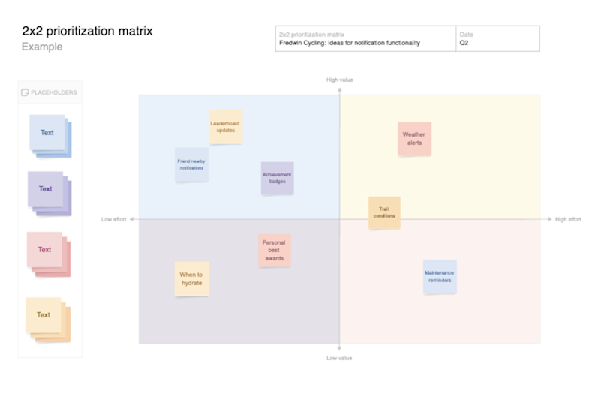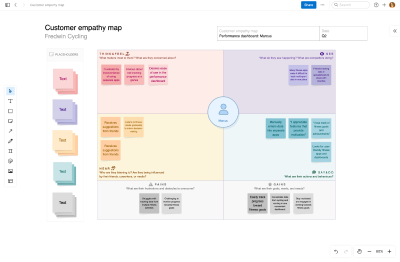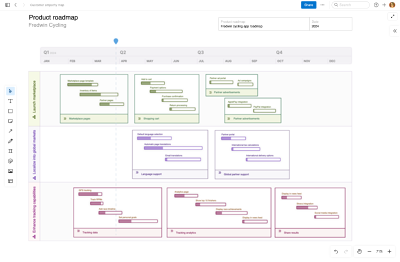Popular templates
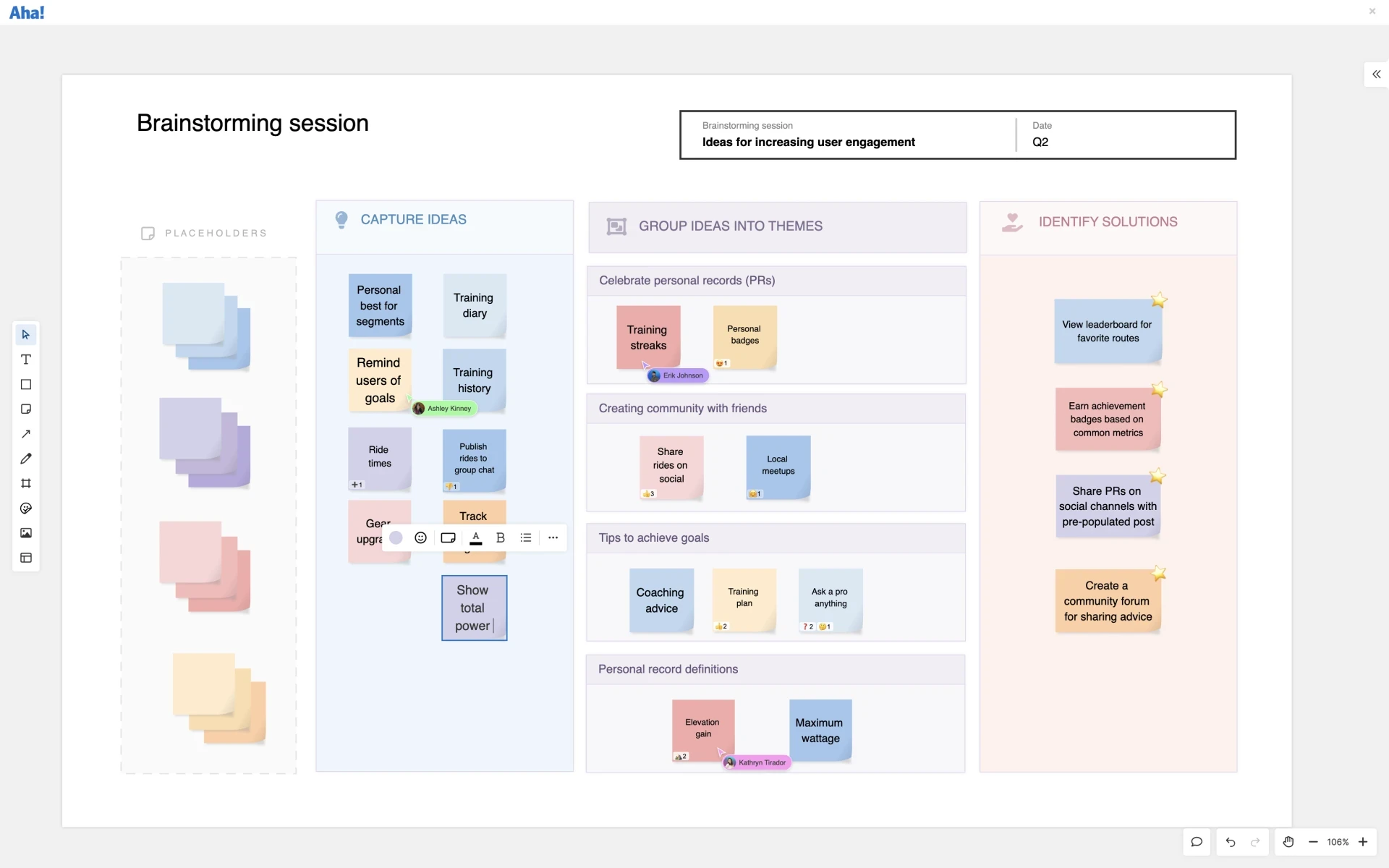
Explore new ways to solve complex problems on a collaborative whiteboard in Aha! software.
If you are still using spreadsheets or a handful of separate apps for product planning, you might find that whiteboard software will offer a much-needed productivity and innovation boost. This is your chance to think differently and tap into your creativity.
Let's explore seven ways to begin product planning with digital whiteboards — plus the templates we recommend for getting started. Use the following links to jump ahead to a specific section:
1. Research and capture product strategy
All product plans must be grounded in strategy first. Product planning does not begin with features (the "what") or development and releases (the "how") — everything must start with the "why." That is, the reason your product exists and the value it brings to customers.
So when you think about using a digital whiteboard in product planning, begin by capturing these strategic elements. They should be based on your research and understanding of your customers and business needs. Starting with this mindset will help you decide where to spend your time.

Whiteboard templates to try
Analyze different business and market factors to refine your product strategy. | |
Gather essential information about competitors so you can address customer needs better than others in the market. | |
Identify potential opportunities for new products, features, or improvements. | |
Build your potential customers' ideal profile to develop empathy for the people you want to serve. | |
Anchor your product in the value you bring to the market by articulating key differentiators. | |
Define or evaluate where you want your product to be in the future to help everyone understand its larger purpose. | |
Explore ways to communicate your product's unique value to customers. |
2. Brainstorm new product ideas
Generating and refining new product ideas is essential to the planning process. Product teams often hold brainstorming sessions on digital whiteboards to get creativity flowing together. Trying out various brainstorming techniques and whiteboard templates, like a concept map or fishbone diagram, can help you explore concepts from different angles.
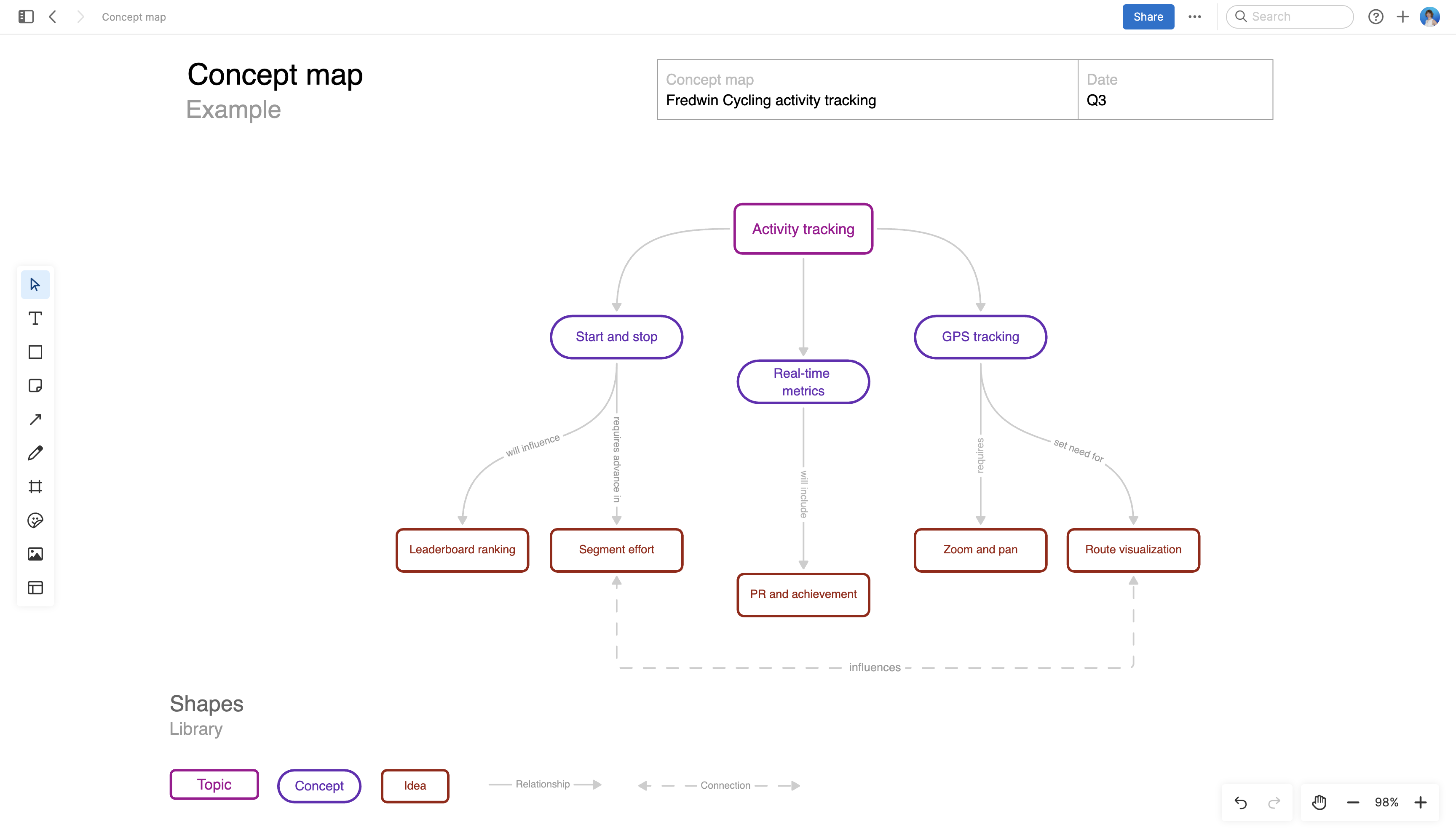
Whiteboard templates to try
Bring the team together to brainstorm ideas, organize by theme, and identify the best solutions. | |
Organize and represent ideas and their relationships so others can follow your thinking. | |
Identify the potential causes of a product problem that you want to solve. | |
Explore a central topic or question — building outwards to reveal new ideas and relationships. | |
Evaluate the advantages and disadvantages of any approach to gain clarity. |
Read more:
3. Define new user experiences
With a fresh supply of product ideas, you will need to shape them into new experiences for your customers. You might think about how users will interact with the new functionality you build and the specific problems it will solve for them. Whiteboard exercises like customer journey mapping can help you better understand the current user experience, identify gaps or pain points, and plan how to make improvements.
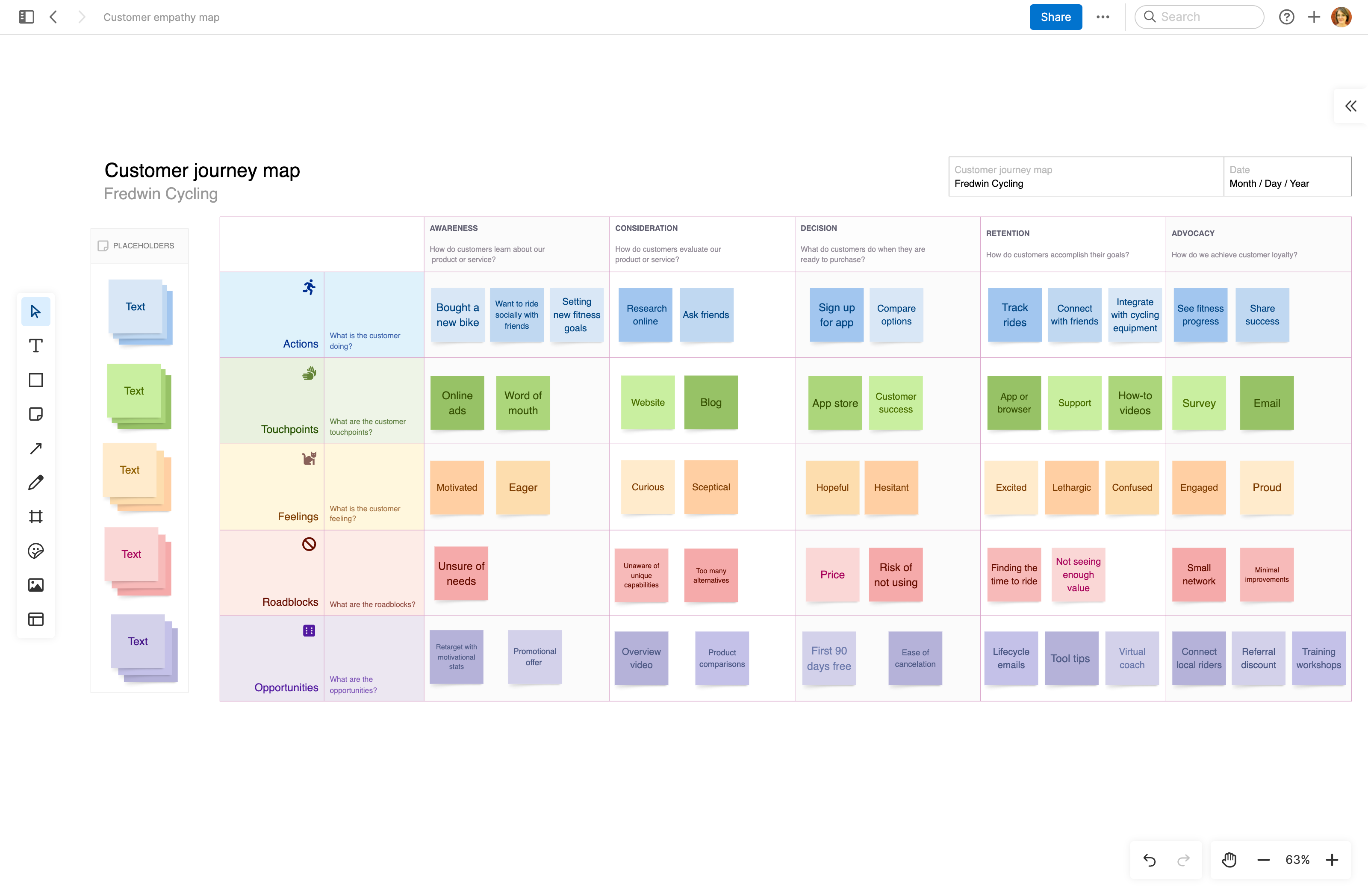
Whiteboard templates to try
Sketch the entire customer journey to understand how customers interact with your product. | |
Break down various factors to consider in defining a new experience for customers. | |
Clearly articulate the problem you aim to solve for users. |
4. Draft an early-stage strategic roadmap
Have you ever created a roadmap on a whiteboard? It can be helpful to get a rough draft going of what you want to deliver, and when, in this early planning phase. A roadmap whiteboard template (like a Now, Next, Later roadmap view) makes this a simple task in a sharable format — so you can gain initial feedback before committing to more robust roadmap plans. You could even color-code themes of work, or draw dependency lines to show which items relate to each other.
Whiteboard templates to try
Display big themes of work that will tie to your overall product goals. | |
Get a baseline idea of immediate, upcoming, and future roadmap plans. | |
Map out the direction of your product and the work needed to turn product vision into reality. | |
Visualize high-level initiatives and timelines for major bodies of work. |
5. Align with stakeholders
It is a good idea to get stakeholders invested in your plans from the start. In these early stages, cross-functional teammates can help shape the strategic direction of what you intend to build — offering valuable input from their different perspectives. Use a digital whiteboard to document who you want to involve in your plans, and how.
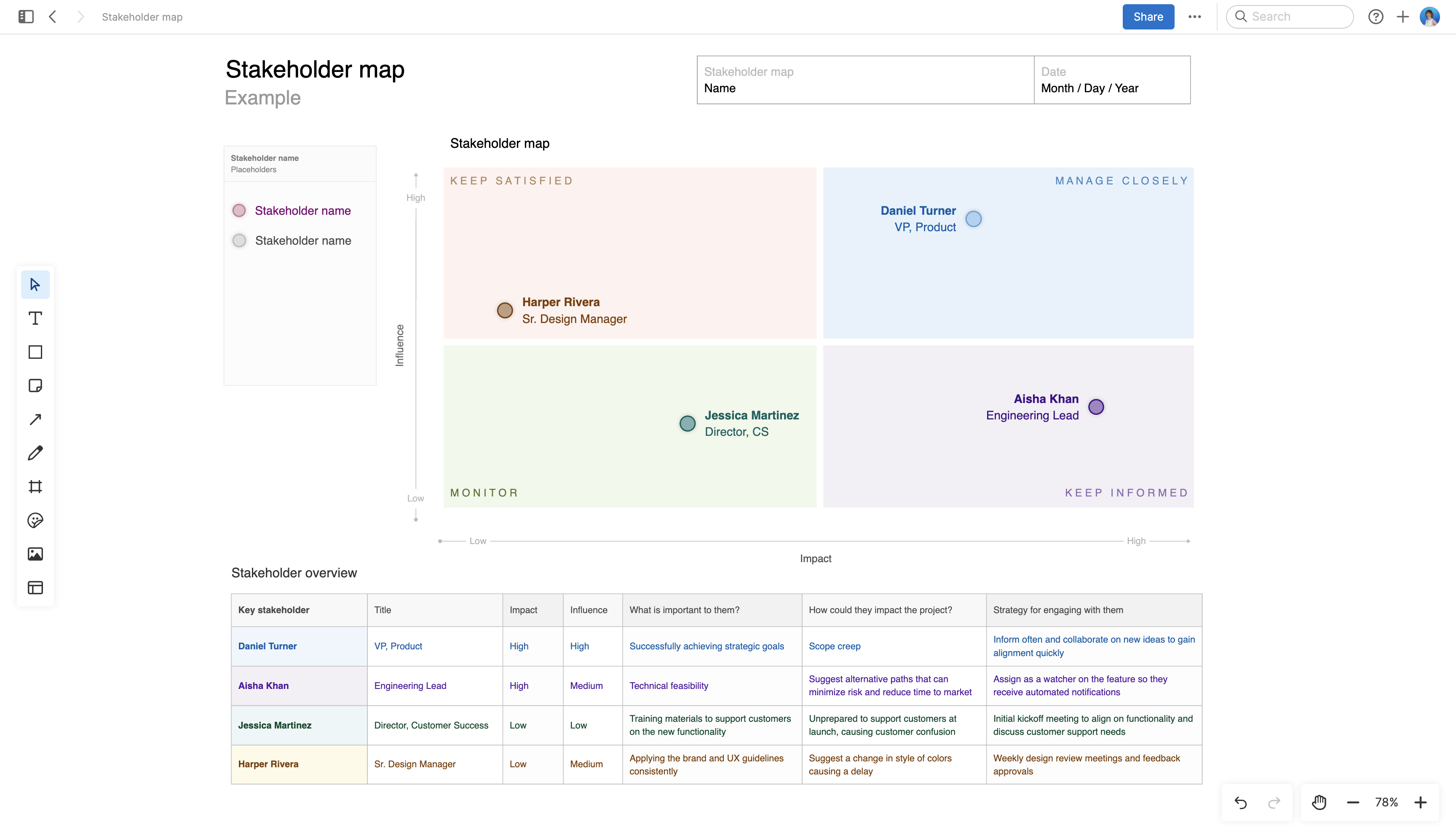
Whiteboard templates to try
Determine how to engage key stakeholders at every stage of product development. | |
Identify individuals and groups that should be involved in your product decisions. |
6. Create wireframes
The earlier product management and UX can get on the same page, the better. And sometimes you will need more than just a basic diagram to align on how new functionality should appear. Sketching a wireframe on a whiteboard can help you communicate preliminary thoughts on design and the in-app experience.

Whiteboard templates to try
Create a basic sketch of a data, reporting, or performance dashboard. | |
Communicate your layout ideas for a product homepage. | |
Illustrate the intended signup or login flow for your application |
Read more:
7. Refine product team processes
It is always a good idea to review product team processes for what is working smoothly, and what is not. But doing so in early-stage planning can help you spot potential roadblocks and bottlenecks before you get far along into product development. Try mapping out current processes and workflows on a digital whiteboard with your product team to identify any areas of friction that could be smoothed — then re-diagram as needed.
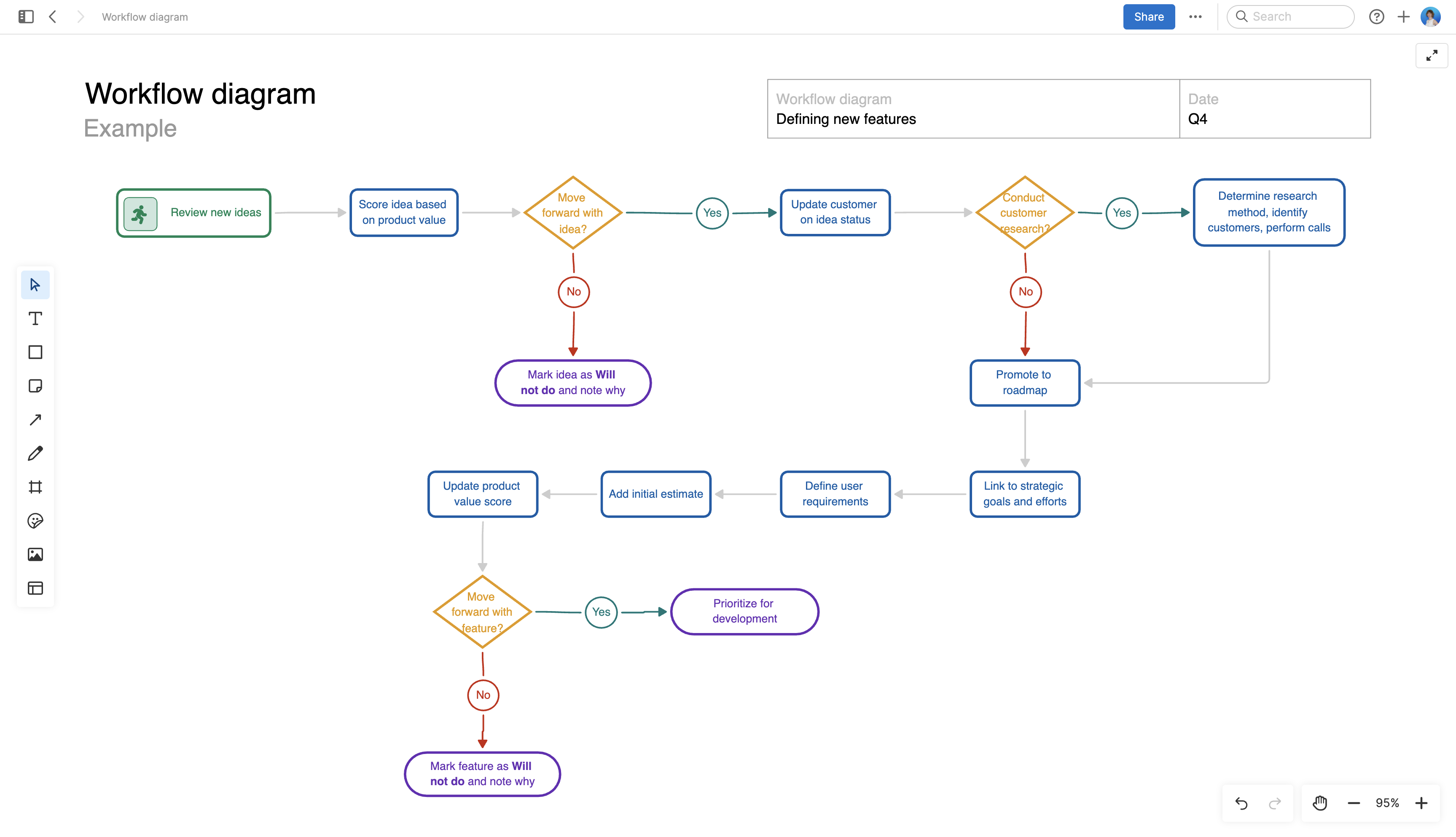
Whiteboard templates to try
Plot the sequence of steps, activities, and interactions that are part of a team process. | |
Map out team workflows for better efficiency and transparency. |
Depending on the templates you choose, invite core team members across engineering, UX, customer success, and marketing to contribute to your planning whiteboard live or asynchronously. Make sure everyone you invite understands the goal behind the collaboration, then provide them ample time to think deeply and participate.
Digital whiteboard tools often come equipped with features that can help drive this participation, such as emoji reactions, inline commenting, and interactive voting tools. Take advantage of these during your whiteboard sessions to help everyone get the most out of them.
As you progress, you can continually add templates and refine different sections of your whiteboard — it is a limitless canvas. Teams can even work within different areas of the whiteboard simultaneously. With everything housed in one central location, it becomes easy to review plans and provide feedback in an organized way.
Shifting from your digital whiteboard to tangible work
Digital whiteboards are excellent tools for early-stage planning. But with your bold new product ideas in motion, it is important to think about how to connect them to what comes next: defining, prioritizing, and delivering new enhancements to customers.
Related:
How to move early-stage whiteboard concepts to your product roadmap
Video tutorial: Go from whiteboards to your roadmap and back
If you choose to use Aha! software, any work you do on a whiteboard can be converted into initiatives, epics, or features on your product roadmap — so early ideation is closely connected to your more detailed work. You can also work in the opposite direction by adding Aha! software views and existing feature records directly to your whiteboard, making it easy to adjust plans and continue innovating in a visual space throughout the entire product development cycle.
